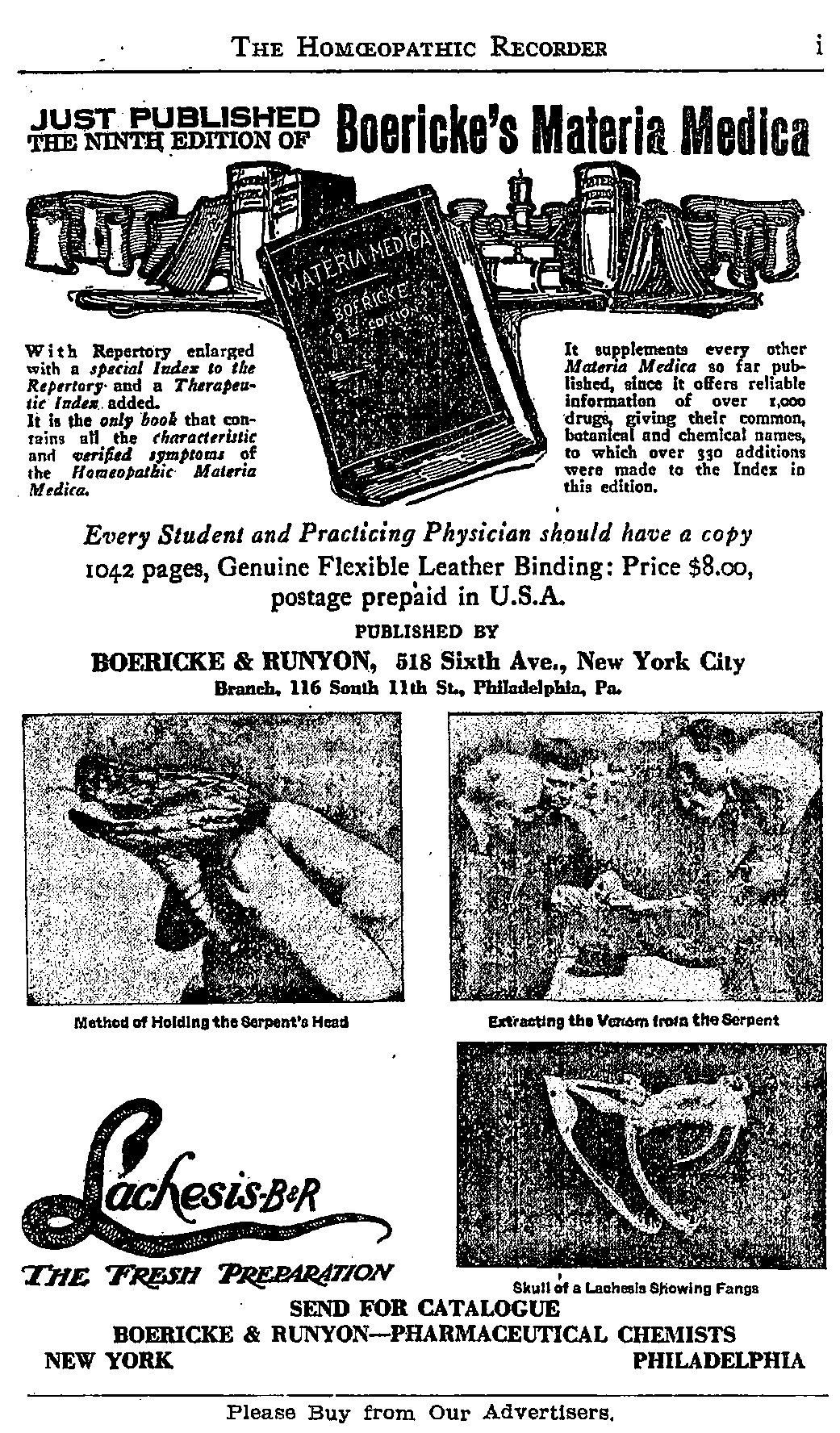IMPORTED TINCTURES
Whenever practicable Hahnemann made his tincture from the fresh succulent plants and parts of plants. For it had been observed that during the process of drying many volatile constituents were lost outright, and in addition such, changes wrought by the oxidizing action of the air that portions of the juice would be rendered insoluble no matter how careful the plant be dried.
Of all plants indigenous to Europe the ready-made tinctures have; of necessity, to be imported, and thesse are generally procured from homoeopathic Pharmacies in Germany.
The high import duty which is put on Homoeopathic tinctures induced a good many pharmacists to follow this Pharmacopoeia’s advice and to prepare their tinctures from the imported herbs of fluid extracts, and they thus obtain a pound of tincture for less than the import duty amounts to.
Tinctures made from the fresh, juicy plants or so-called “fresh plant tinctures” have the peculiarity that they do not look green, or only in such exceptional cases where they are made with stronger alcohol, as in Thuja, Rhus, Oleander, Badiaga, and a few others. The green coloring matter of plants in not soluble in dilute alcohol, which is generally used in the preparation of tinctures.
Boericke & Tafel import their European tinctures from the most renowned Pharmacies in Germany, and furnish them in their pure concentrated state just as received at the following rates:
AMERICAN FRESH PLANT TINCTURES
Among the 429 mother tinctures treeated of in the American Homoeopathic Pharmacopoeia there are no less than 722 made indigenous American plants.
To obtain these fresh plants, distributed as they are over so vast a territory, entails great labor and expense on the pharmacist.
Boericke & Tafel employ a corps of experienced collectors who, under the personal surpervision of a thorough botanist, gather a majority of these plants within a radius of twenty-five miles of Philadelphia. This city is peculiarly fortunately located, as in the hot sands and swamps of adacent New Jersey many sub-tropical plants are met with. While the shad glades in the vicinity of the city are harbingerss of plants preferring a more temperate clime.
Through their several branches and through special agents located in different parts of the country, all fresh plants are obtained in their full vigor and gathered in their proper season. In the course of years this system has been brought to perfection, and as all plants are dispatched by express the same day they are gathered to headquarters (those from a distance packed in moist moss or sand), their tinctures have gained a reputaion for fine quality unapproached by any other pharmacy.
TINCTURES MADE FROM DRIED DRUGS
There is a great diversity in the quality and strength of Homoeopathic Mother Tinctures as furnished by different pharmacies. Let us consider those prepared according to class TV of Hahnemann from dry plants or parts of plants. Among the 429 mother tinctures mentioned in the “American Homoeopathic Pharmacopoeia,” there are no less than 103, or nearly 25 percent, which are made that way. Hahnemann directs that for class IV the proportion of the crude drug to the menstrum should be one part to five. The “American Homoeopathic Pharmacopoeia,” and Dr. Schwabe’s “Polyglott Pharmacopoeia in Leipzig,” are the only ones that followed the master’s direction, all other Pharmacopoeias direct the proportion to be one to ten of vehicle, while Dr. Buchner’s otherwise admirable work directs a proportion of one part of drug to twenty of the menstrum. Class IV comprises such much used remedies as Coffea, Colocynth, Cantharis, China, Cina, Ignatia, Ipecac, Nux vomica, Opium, Rheum, Secale, Spongia, Lobadilla, ustilago, etc.
In this country the firm of Boericke & Tafel is the only one taht publicly made known that since 1880 they prepared their tinctures in accordance with Hahnemann’s directions. All other pharmacies prepare theirs in the proportion of one of the durg to ten of menstrum, a fact that readily becomes apparent on comparison. Boericke & Tafel’s dry plant tincturs are, therefore, twice the strenght of those of any other pharmacy, as has been demonstrated over and over again, and as their goods are sold at but a slight advance in price over those of their competitors, it will be seen that their tinctures are in reality the cheapest, as theirs will go twice as far as any others made. Another factor deserves mention, and this is that for many years Boericke & Tafel import their select drugs direct from Europe, and thus secure a superior quality not usually.



